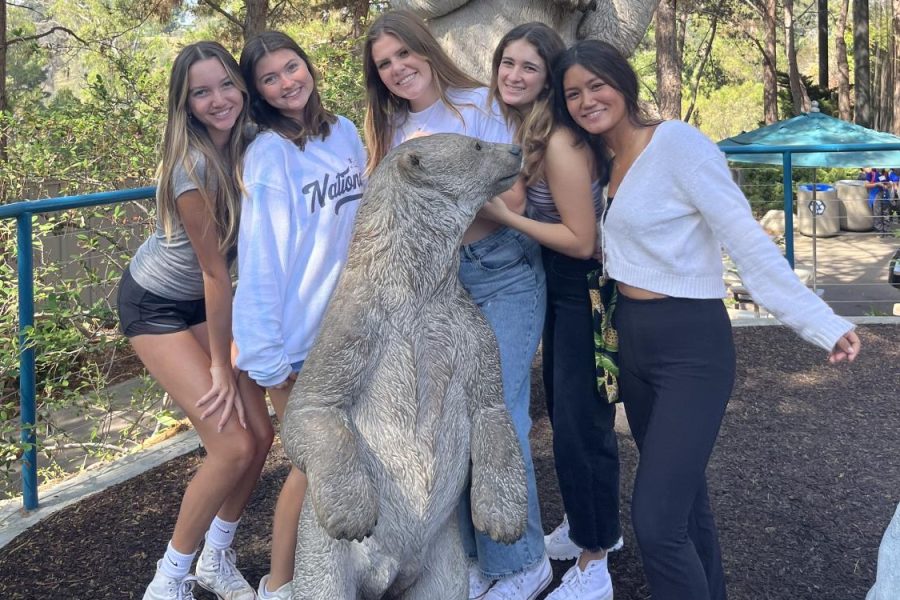Psych Students Study the Zoo
CCHS Juniors Brooke Quiarte, Sarah Brown, Maisyn Clements, Reese Covington, and Sophia Cervantes are thrilled to study the brains of the polar bears! On Friday, October 21, Mr. Caro’s Psychology classes explored the San Diego Zoo and reflected on the behaviors, biology, and motivation of animals in captivity.
Mr. Caro, Psychology professor at Mira Costa College and AP Psychology/College Psychology teacher for Cathedral Catholic High School (CCHS), is centered in teaching hands-on, observational learning techniques. What better place to practice this than the San Diego Zoo?
On Friday, October 21, nearly 100 Psychology students at CCHS were invited to explore the San Diego Zoo in order to reinforce the concepts of their biological, social, motivational, and cognitive-behavioral psychology units, and to admire the real world applications of each.
After gathering observational data, students reflected on the following prompt: Did you notice any trends in the species such as, which seemed most active?
Mallory Axline ‘24 noted the activity of social species, animals who were not in solitary habitats, “They tend to demonstrate behaviors like moving in a pack, which stems from their hereditary tendencies to act as a predator or prey.”
Despite the safety within the bounds of their habitat, their animalistic psychology remains. Pack movement may be attributed to altruistic behavior, when animals help each other— in this case by ensuring safety against attack. Altruism was also seen among the gorillas, “assisting each other while eating,” remarks Maisyn Clements ‘24.
Even basic tendencies like hunger can be traced to psychological motivations. The hunger drive is influenced by the animal’s hypothalamus and desire to reduce the sensation of hunger. Once they eat, reward hormones like dopamine will be stimulated.
One group of students questioned how the fragile, fenced barrier is capable of resisting the escape of large animals. Cognitive-behavioral psychology reasons this to be a model of Seligman’s learned helplessness philosophy. In simple terms, the animals do not believe themselves to be capable of escape because they have been in captivity for extended periods of their life.
By revealing how basic animal brains work as a system, Axline learns that she “can apply the knowledge to study more complex human psychology.” Thank you to Mr. Caro for giving his students this opportunity!

Sarah Brown. Cheerleader, journalist, and vegan. Sarah has three siblings, all in college and her sister attends Colorado State University. She failed...





















































